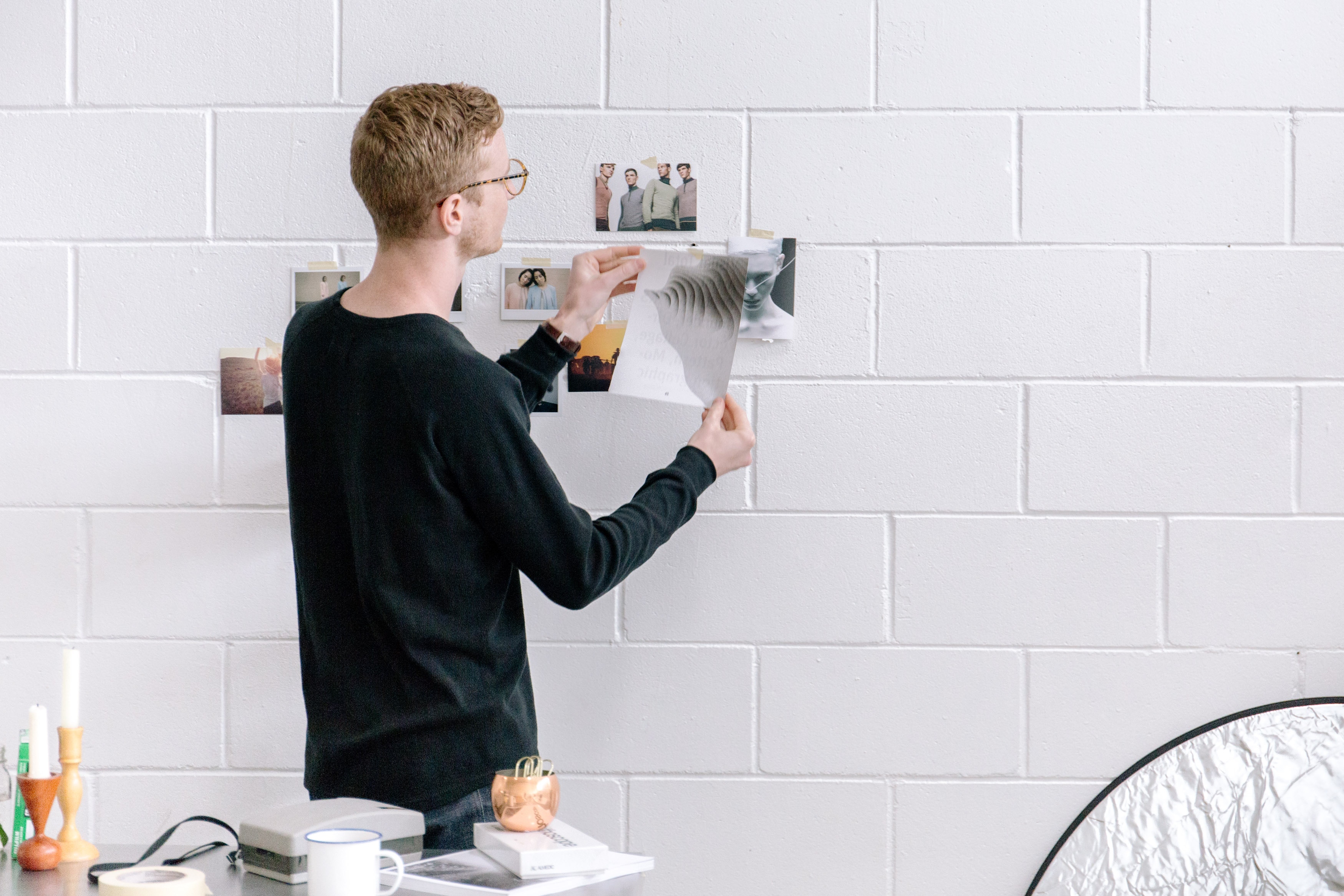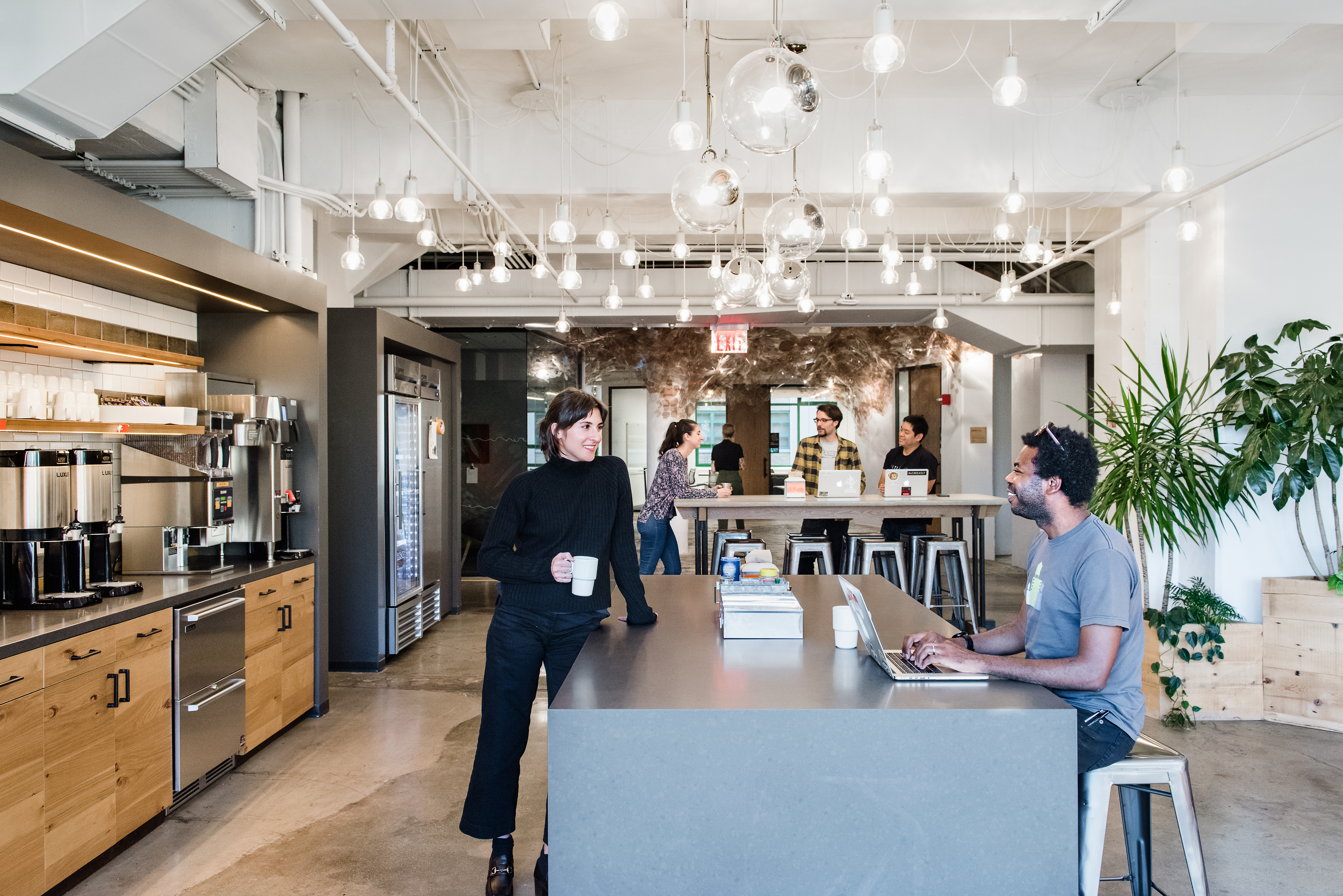Want a more inspired workforce? Research shows that tricks like taller ceilings and moveable walls may foster innovation.
Can innovative office design make you more creative? A growing body of research says yes, inspiring architects and employers to tweak workspaces to encourage big ideas.
Designers are building offices that encourage exercise, which has been shown to boost creativity, and nurturing cross-pollination between employees through smart design. They’re also carving out space for play, which can give your brain the reset needed for flow state.
As architects and employers embrace new research in behavioral design, they’re strategically adding light and color (studies show green nurtures creativity), making ceilings taller, incorporating serene meditation rooms, offering people more ownership of their space, and micro-managing noise. The goal: oil the wheels of innovation.
Raise the Roof
There’s a reason our brains like high ceilings. They foster perceptions of freedom and seem to spark even bigger thinking. Just look at churches, universities, and libraries.
In the last decade, research emerged that tied high ceilings to a psychological sense of freedom.
Call it “the cathedral effect,” brought on by the relationship between perceived height of a building and cognition. Neuroimaging shows (literally) that high ceilings indeed do promote notions of enhanced freedom, creativity, and abstraction, and low ceilings prompt confined thinking. When study participants were asked to judge rooms as “beautiful,” most of the accolades went to those with higher ceilings.
Researchers, too, found that high ceilings precipitated heightened brain activity in the left precuneus and left middle frontal gyrus of the brain, two areas associated with visuospatial exploration. The left precuneus, in particular, has been found to increase in cortical thickness, which positively correlates with intelligence.
Designers took hold of the idea and have since used it in commercial design to influence purchases. Among other things, the approach has persuaded craft stores to make their stores tall and wide to nourish creativity and stimulate buying impulses, and it’s why ceilings are so low in fast food companies as the space discourages loitering.
Employers have now applied the theory to workplaces, incorporating high ceilings to encourage big thinking. To that end, Apple rid its headquarters of all threshhold doorways, because designers believed that like high ceilings, the low doorways would disrupt the flow state of creativity.
Say, perhaps, that lofty ceilings are not an option? Designers can make a space feel bigger with blue paint, rather than the confined feeling of red.
Add Some Zen
Much has been written about the connection between meditation – and even just zoning out — and creativity and productivity. Research confirms that key elements of meditation, including the awareness of thoughts and focused thinking, can spur new ideas. Hitting your brain’s pause button often inspires new ideas.
IA Interior Architects designed a corporate headquarters for one tech client that included a meditation room on each floor of the office tower. Visitors pass through layers of fabric to reach the rooms, which are spare environments with windows that offer vista views.
Yet simply converting a room for prayer, mindfulness and meditation, and labeling it a “Zen Room” isn’t enough. Top executives must serve as models by using the space or stressing to staffers the importance of taking care of themselves and recharging. “If the culture doesn’t support it, then we found the rooms don’t get used,” says Mary Lee Duff, IA’s director of workplace strategy.
Employees as Designers
The more ownership people feel about the space in which they work and the more comfortable and happier they feel, the more creative they become, says Craig Knight, a United Kingdom researcher who studies the psychology of office space. Simply allowing employees to put up their own photos and artwork on the walls or to personalize their workspace can make a real difference in how they perform. Making space flexible helps as well.
The d.school at Stanford has walls that can be moved and reconfigured in a few minutes, transforming an open office into a private space. Employees at Boulder-based Rally Software get similar flexibility. The office includes tracks on the ceilings and hidden networking wires so workers can move walls and whiteboards at any time.
Bring the Noise
The backlash against the open office has driven a “silence is golden” bandwagon. But research shows that some amount of noise is actually good for creativity. In one study, groups were asked to perform creative tasks. It turns out those that performed best did so with a moderate amount of noise equivalent to the din of a bustling restaurant or coffee shop. Maybe that’s why so many creatives flock to coffee shops to get their juices flowing. Researchers found that abstract sounds like white noise don’t help, nor do intermittent noises or one-sided phone conversations.
To generate new ideas in an open office environment, designers can muffle excessive noise by setting up movable screens and areas for heads-down focused analytical work, and use soundproof office phone booths for calls and video conferencing.
Creativity can’t be nailed down to one particular fix or design motif. Rather, a host of design attributes must be combined to encourage a more comfortable, happier, and healthier workplace, as well as a breeding ground for new ideas. Companies are evolving, not only with their aesthetics but also with how that design impacts their workforce.
As Duff from IA Architects says, “Companies research everything, and as designers, we have to explain why we chose something, whether it’s a shade of color or an angle of a room. And we’re always motivated to create beauty that makes people want to spend time there.”


